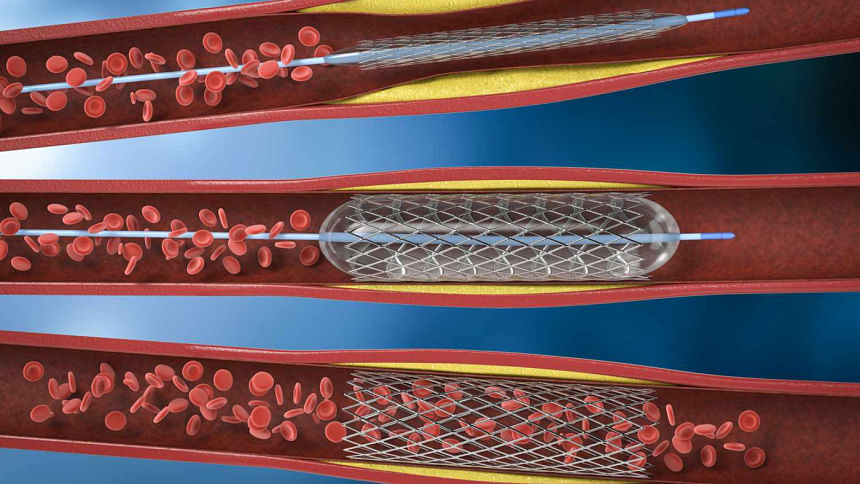Drug-coated balloon outperforms uncoated balloon in treating blocked arteries

Researchers compared the efficacy and safety of a drug-coated balloon versus an uncoated balloon in a study published in the Journal of the American Medical Association to treat in-stent restenosis, a complication that affects up to 10% of patients undergoing percutaneous coronary intervention (PCI) with modern drug-eluting stents.
The trial involved 600 patients randomised into two groups, with two-thirds receiving a paclitaxel-coated balloon and the remainder receiving an uncoated balloon during PCI. Baseline characteristics were similar between groups, with an average age of 68 years, 26% of participants being women, and 43% having multiple-layer in-stent restenosis.
The main outcome, which included ischemia-driven target-lesion revascularisation, target-vessel myocardial infarction, or cardiac death at 12 months, was much lower in the drug-coated balloon group (18% vs. 29%) than in the uncoated balloon group. The drug-coated balloon significantly reduced both target-lesion revascularization (13% vs. 25%) and target-vessel myocardial infarction (6% vs. 11%).
These findings were consistent across various subgroups, indicating broad applicability. Importantly, there was no apparent increase in the risk of stent thrombosis with the use of the drug-coated balloon.
Overall, the study shows that using a drug-coated balloon to treat in-stent restenosis may have better results than using regular uncoated balloons. This could mean that patients don't need as many interventions and have better safety and prognosis.

 For all latest news, follow The Daily Star's Google News channel.
For all latest news, follow The Daily Star's Google News channel. 



Comments